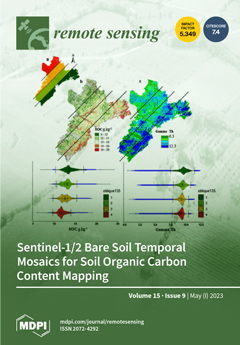Dust storms are natural disasters that have a serious impact on various aspects of human life and physical infrastructure, particularly in urban areas causing health risks, reducing visibility, impairing the transportation sector, and interfering with communication systems. The ability to predict the movement
[...] Read more.
Dust storms are natural disasters that have a serious impact on various aspects of human life and physical infrastructure, particularly in urban areas causing health risks, reducing visibility, impairing the transportation sector, and interfering with communication systems. The ability to predict the movement patterns of dust storms is crucial for effective disaster prevention and management. By understanding how these phenomena travel, it is possible to identify the areas that are most at risk and take appropriate measures to mitigate their impact on urban environments. Deep learning methods have been demonstrated to be efficient tools for predicting moving processes while considering multiple geographic information sources. By developing a convolutional neural network (CNN) method, this study aimed to predict the pathway of dust storms that occur in arid regions in central and southern Asia. A total of 54 dust-storm events were extracted from the modern-era retrospective analysis for research and applications, version 2 (MERRA-2) product to train the CNN model and evaluate the prediction results. In addition to dust-storm data (aerosol optical depth (AOD) data), geographic context information including relative humidity, surface air temperature, surface wind direction, surface skin temperature, and surface wind speed was considered. These features were chosen using the random forest feature importance method and had feature importance values of 0.2, 0.1, 0.06, 0.03, and 0.02, respectively. The results show that the CNN model can promisingly predict the dust-transport pathway, such that for the 6, 12, 18, and 24-h time steps, the overall accuracy values were 0.9746, 0.975, 0.9751, and 0.9699, respectively; the F1 score values were 0.7497, 0.7525, 0.7476, and 0.6769, respectively; and the values of the kappa coefficient were 0.7369, 0.74, 0.7351, and 0.6625, respectively.
Full article





